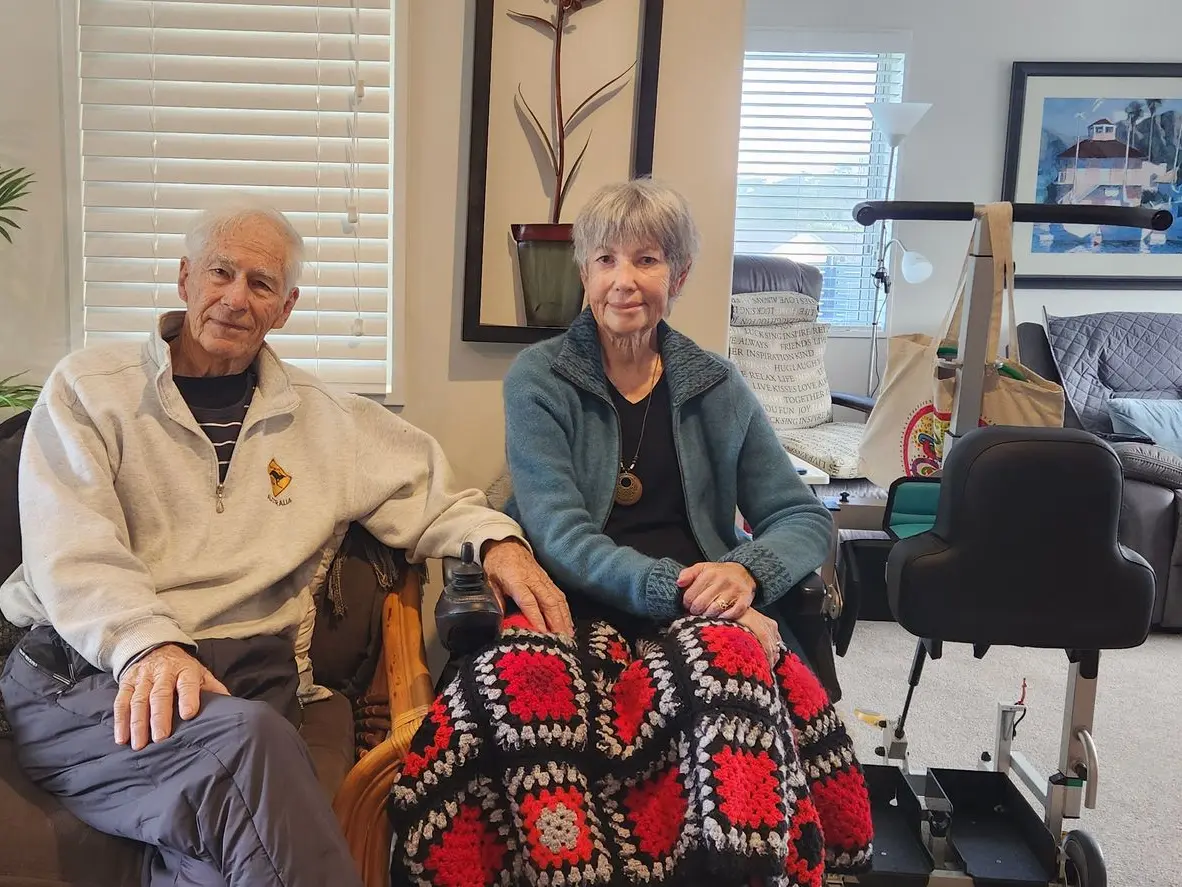As MS progresses, it becomes harder to do everyday tasks like getting from bed to a chair, or from the toilet to a wheelchair. That’s why it’s so important to have the right transfer system in place – something that suits your needs today, and adapts as those needs change.
This guide breaks down the most common mobility and transfer aids, and helps you think through when to make the switch to something more supportive. It also explains why, for many people in later stages of MS, a sit-to-sit hoist (like the Kera) becomes the safest, simplest way to keep living at home with one caregiver.
Understanding how MS affects movement
MS affects people in different ways, but many experience progressive muscle weakness, fatigue and balance issues. Over time, walking may become difficult or impossible. You might start using a cane or walker, then a wheelchair for longer distances. Eventually, you may not be able to stand up safely at all. That’s when transfers – the act of moving between two seated surfaces – become more complex.
Common transfer options
Here’s a quick guide to the most common systems:
- Slide board: A simple board you slide across from one seat to another. Best for people with good upper body strength and balance.
- Walker / cane: Helps with early-stage mobility, but not useful once standing becomes unsafe.
- Sit-to-stand hoist: Supports someone to stand up for a few seconds to pivot. You still need leg and core strength.
- Sling hoist: A large mechanical device that lifts you in a sling and moves you across a room. Safe, but needs two caregivers and can be slow and uncomfortable.
- Sit-to-sit hoist: Lifts and moves you in a supported seated position. Needs only one caregiver, no standing strength, and can be used in small spaces like bathrooms.
When a sit-to-sit hoist becomes the best option
If you or a loved one can no longer stand safely, even with support, a sit-to-stand aid is no longer suitable. A sling hoist may be recommended, but it often needs two caregivers and lots of room to operate.
That’s when people turn to sit-to-sit options like Kera hoists. These are designed specifically for people who:
- Can no longer weight-bear or stand
- Have little or no trunk control
- Want to remain at home, with support from just one caregiver
Real families, real freedom
People who use Kera hoists often say it’s helped them stay home and avoid residential care:
| “We were at a loss before the Kera came along. I can manage here at home by myself... and Jean doesn’t have to go into a rest home.” – Erik, caring for his wife with MS |
“It’s taken such a weight off my shoulders. We’re independent again.” – John, caring for Barbara at home |
|
Planning ahead
You don’t have to wait for a crisis. Talk to your occupational therapist early about how your needs might change, and what equipment will give you the most comfort, dignity and control.
Sign up and watch a free Kera Demo Video

